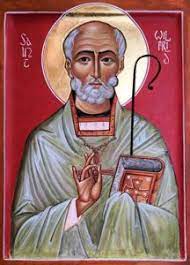St Wilfrid

St Wilfrid's Feast Day is celebrated each year on 12th October.
Wilfrid was a native of northern Britain. Wilfrid was known for his determination and feistiness. He travelled throughout northern Europe and was thought to be the first Englishman to make a pilgrimage to Rome. Wilfrid became a monk on the Island of Lindisfarne, in Northumbria and spent time in Canterbury. He spent several years in France, was the Abbot of Ripon, founded a monastery in Hexham, and eventually became Bishop of York.
Wilfrid became a controversial figure when he supported the Church’s decision to calculate the timing of Easter rather than continue to follow the Celtic custom. He made thoughtful and persuasive arguments at the Synod of Whitby in 664 and became the chief spokesperson at that synod. He was often in dispute with kings and clergy alike, and even with fellow saints and had to spend a number of years in exile. Whilst on his travels, he converted many non-believers and founded churches in southern England and the Netherlands.
In 672, whilst Wilfrid was abbot of the monastery at Ripon, he built a new stone church dedicated to St Peter. After his death in 709, Wilfrid’s body was buried in his church ‘close to the altar on the south side’. His shrine became an important destination for mediaeval pilgrims. Today, the surviving remains of the Church of St Peter is now built into the crypt beneath Ripon Cathedral. This was intended by Wilfrid to be a place of prayer and pilgrimage. Here contains the relics of many saints which Wilfrid had brought back from Rome. The location of Wilfrid’s own relics is unknown, but the legacy of Wilfrid lives on in the annual celebration of Easter and in the sacred liturgy and music that exists to this day.
